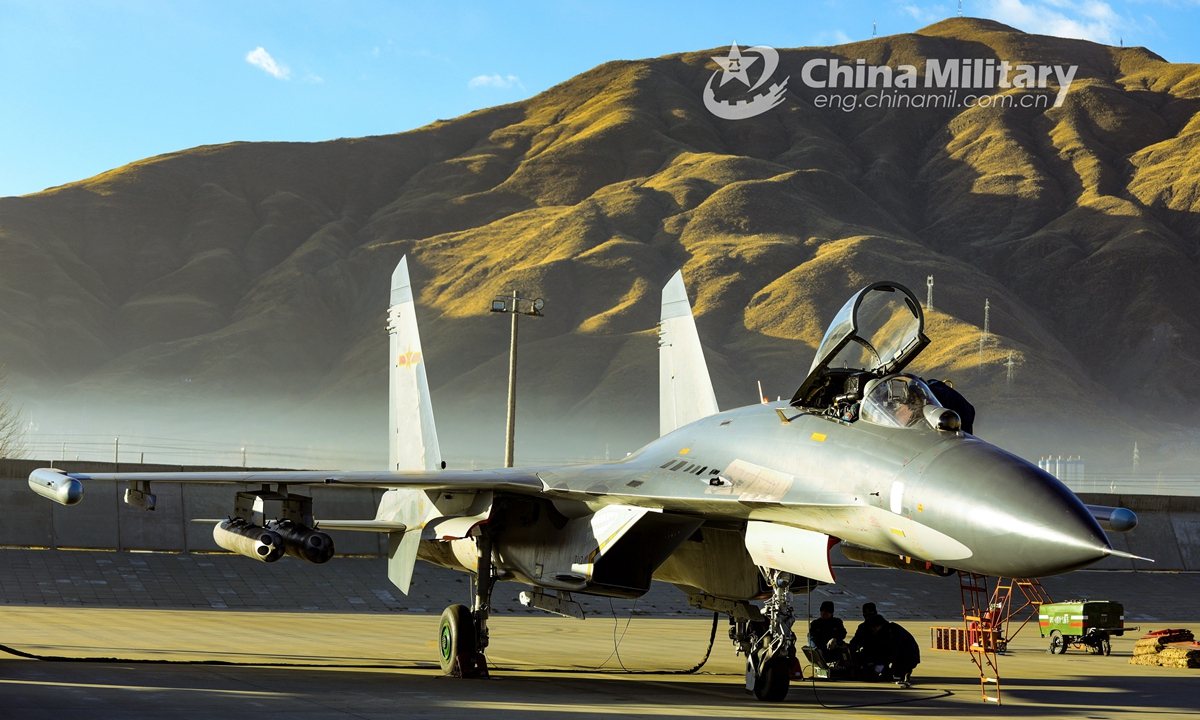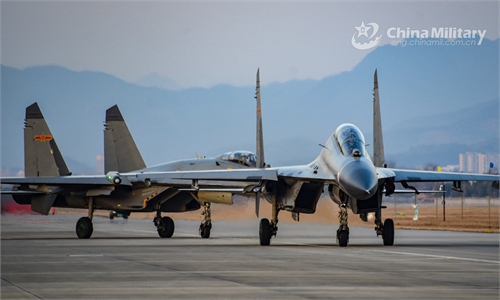
Ground crews assigned to an aviation brigade of the air force under the PLA Western Theater Command perform thorough inspections on a fighter jet prior to a real-combat flight training exercise. (eng.chinamil.com.cn/Photo by Zhang Weiwei)
The Chinese People's Liberation Army (PLA) Western Theater Command has begun to integrate air defense systems of the Army and Air Force in a move experts said on Tuesday can complement each other's capabilities and better secure China's air security in joint operations in the region.
All air defense battalions affiliated with an Army air defense brigade started to integrate into the chain of command of an Air Force base in turn, and assume combat alert duties since July 2020, the PLA Daily reported on Tuesday.
The Air Force base has dispatched three batches of personnel from air defense, radar and communications units to the Army brigade to coordinate and unify related protocols, and this boosted both services' combat capability, the newspaper reported.
Thanks to the integration, the Army air defense brigades have become key nodes in Air Force early warning systems, as Army radars are more accurate and make up for blind zones of the Air Force's early warning network, the report said, noting that the Army also gained a longer detection range that enabled troops to find enemies and prepare for attacks earlier, as the Air Force shares all intelligence through the network.
Fu Qianshao, a Chinese military aviation expert, told the Global Times on Tuesday that this forms a joint operations system, in which weapons and equipment are integrated cross-service.
The Army and Air Force have different air defense missions. Usually the surface-to-air missile installations of the Air Force focus on defending key facilities and cover a longer range, while the Army's air defense systems are more mobile and would need to follow mechanized ground forces, but have less range, Fu said, noting that while the Air Force's long-range radars can see farther, they are less efficient against targets at low level, and that is where the Army's field air defense systems excel at.
Integrating the two will more efficiently cover all types of targets, and the more installations there are in the joint system, the stronger and resilient the system will be, as some installations could happen to be jammed by hostile electromagnetic interference but others will still do the work, Fu said.
Integrated into the system, the Army brigade conducted five mock combat with warplanes of the Air Force's aviation troops in the past half year, and developed several new tactics that are suitable to the characteristics of the equipment, the PLA Daily said.
During China's National Day military parade in 2019, the PLA displayed its complete ground-based air defense system, including a new type of early warning radar, the HQ-9B long-range missile, HQ-22 mid-to-long-range missile, HQ-12A mid-range missile and HQ-6A missile and artillery system of the Air Force, and HQ-17A close-range missile and HQ-16B field air defense missile of the Army.




